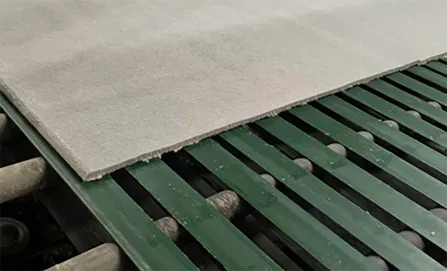- Afrikaans
- Albanian
- Amharic
- Arabic
- Armenian
- Azerbaijani
- Basque
- Belarusian
- Bengali
- Bosnian
- Bulgarian
- Catalan
- Cebuano
- Corsican
- Croatian
- Czech
- Danish
- Dutch
- English
- Esperanto
- Estonian
- French
- German
- Greek
- Hindi
- Indonesian
- irish
- Italian
- Japanese
- Korean
- Lao
- Malay
- Myanmar
- Norwegian
- Norwegian
- Polish
- Portuguese
- Romanian
- Russian
- Serbian
- Spanish
- Swedish
- Thai
- Turkish
- Ukrainian
- Uzbek
- Vietnamese
dets. . 11, 2024 11:54 Back to list
mineral fiber false ceiling
The Benefits and Uses of Mineral Fiber False Ceilings
In modern architecture and interior design, the choice of materials plays a crucial role in determining both aesthetics and functionality. One such material that has gained popularity in recent years is mineral fiber false ceilings. These ceilings, made from a mixture of mineral-based materials, offer numerous advantages that make them a preferred choice for various applications in residential, commercial, and industrial spaces.
What Is Mineral Fiber?
Before delving into the specifics of mineral fiber false ceilings, it is essential to understand what mineral fiber is. It is a type of lightweight material that is composed mainly of natural and synthetic minerals. The most common types of mineral fiber used include fiberglass, rock wool, and cellulose. These materials are renowned not only for their acoustic and thermal properties but also for their sustainability and fire resistance.
Key Advantages of Mineral Fiber False Ceilings
1. Acoustic Performance One of the most significant benefits of mineral fiber ceilings is their ability to absorb sound. The porous structure of mineral fiber allows these ceilings to minimize echoes and reduce sound transmission between rooms. This makes them an excellent choice for spaces that require sound insulation, such as offices, auditoriums, and conference rooms.
2. Thermal Insulation Mineral fiber false ceilings provide effective thermal insulation. They can help maintain a regulated indoor temperature, reducing the need for heating and cooling systems. This not only enhances comfort but also leads to energy savings and lowers utility bills.
3. Fire Resistance Safety is paramount in any building, and mineral fiber ceilings excel in this area. Most mineral fiber products are non-combustible and have a high fire-resistance rating. This characteristic makes them ideal for commercial buildings, schools, and hospitals where fire safety is a significant concern.
mineral fiber false ceiling

4. Aesthetic Flexibility Mineral fiber ceilings come in a variety of designs, colors, textures, and patterns. This allows architects and interior designers to create visually appealing spaces that align with their design vision. Whether aiming for a sleek, modern look or a more traditional feel, mineral fiber ceilings can complement various design aesthetics.
5. Easy Installation and Maintenance Installing a mineral fiber false ceiling is generally straightforward, which can save time and labor costs during the construction process. Additionally, maintaining these ceilings is easy; they can be cleaned with a damp cloth and do not require extensive upkeep.
6. Sustainability As environmental concerns continue to grow, the sustainability of building materials becomes increasingly important. Many mineral fiber products are made from recycled materials and are fully recyclable at the end of their life. This feature contributes to a lower carbon footprint, making mineral fiber ceilings an environmentally friendly choice.
Applications of Mineral Fiber False Ceilings
Due to their numerous benefits, mineral fiber ceilings are suitable for a wide range of applications. In commercial spaces, such as offices, retail outlets, and hospitals, they can improve the overall ambiance while ensuring safety and comfort. In residential settings, mineral fiber ceilings can be used in living rooms, bedrooms, and kitchens, providing an attractive and functional overhead solution.
Moreover, they are often employed in educational institutions to enhance acoustic performance, allowing for better sound clarity during lectures and presentations. Additionally, mineral fiber ceilings are found in public spaces such as theaters, galleries, and conference centers where superior sound control is essential.
Conclusion
In conclusion, mineral fiber false ceilings represent an innovative solution that combines functionality, safety, and aesthetics. Their sound absorption qualities, thermal insulation, fire resistance, and design flexibility make them a popular choice in various environments. As building practices continue to evolve, the use of sustainable materials, such as mineral fiber, will likely play an increasingly important role in shaping the architectural landscape. Whether for new constructions or renovations, integrating mineral fiber false ceilings can enhance any space, making it a wise investment for the future.
-
Transform Interiors with PVC Gypsum Ceiling: A Stylish, Durable, and Moisture-Resistant SolutionNewsMay.19,2025
-
The Smart Interior Upgrade: Discover the Durability and Versatility of Gypsum Ceiling Access Panel SolutionsNewsMay.19,2025
-
The Smart Choice for Interior Design: Discover the Value of PVC Gypsum Ceiling SolutionsNewsMay.19,2025
-
Mineral Fiber Ceiling Tiles: The Smart Blend of Performance and AestheticsNewsMay.19,2025
-
Mineral Fiber Ceiling Tiles: The Superior Choice Over Gypsum for Sound and Fire SafetyNewsMay.19,2025
-
Mineral Fiber Ceiling Tiles: Eco-Friendly Strength and Style for Every CeilingNewsMay.19,2025







